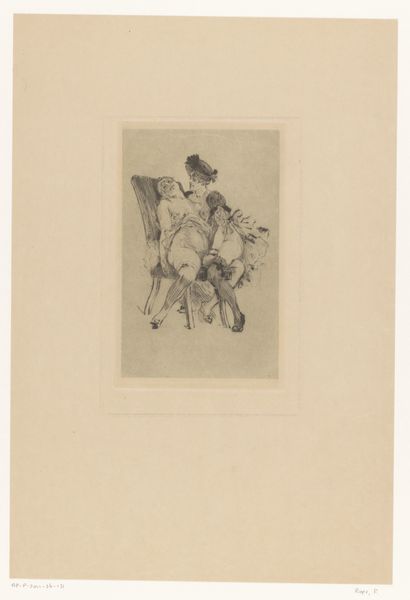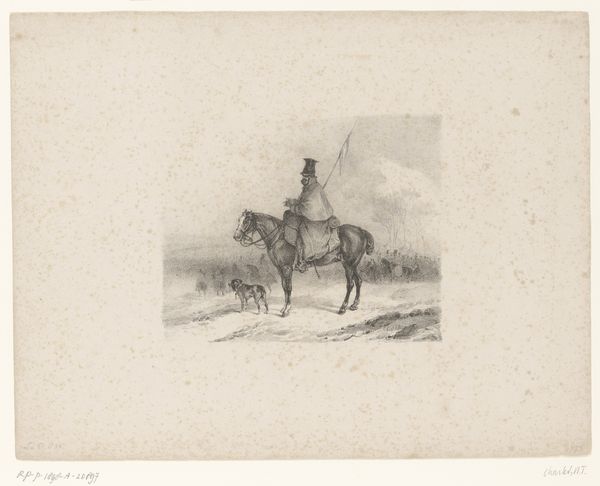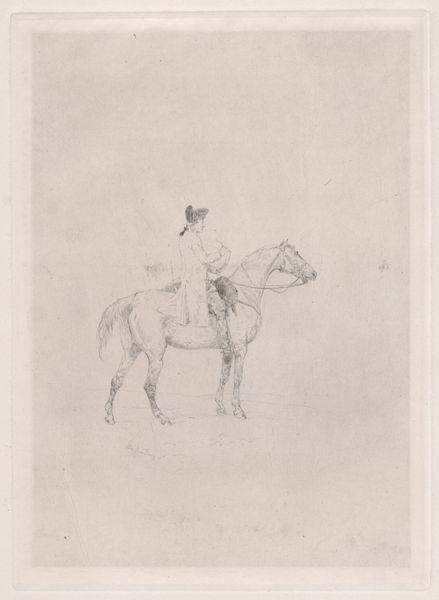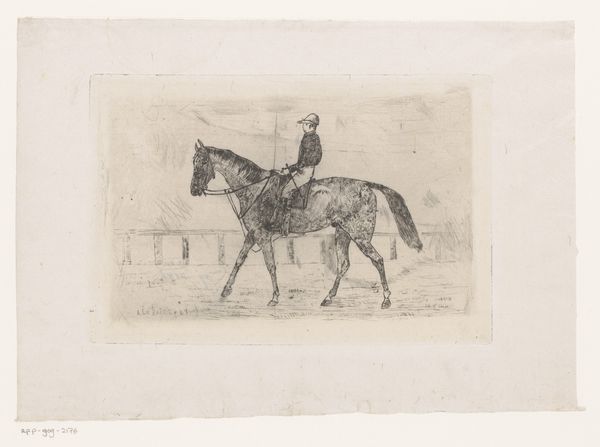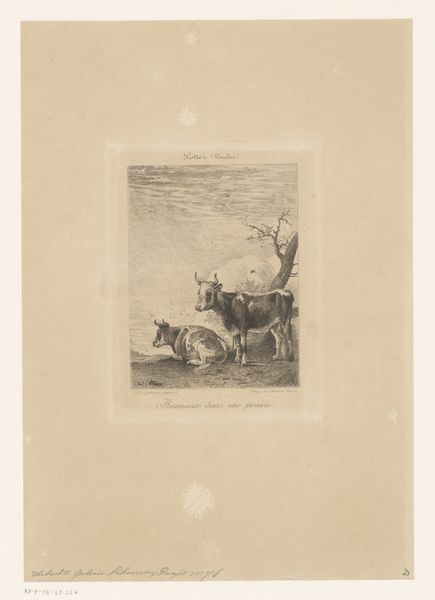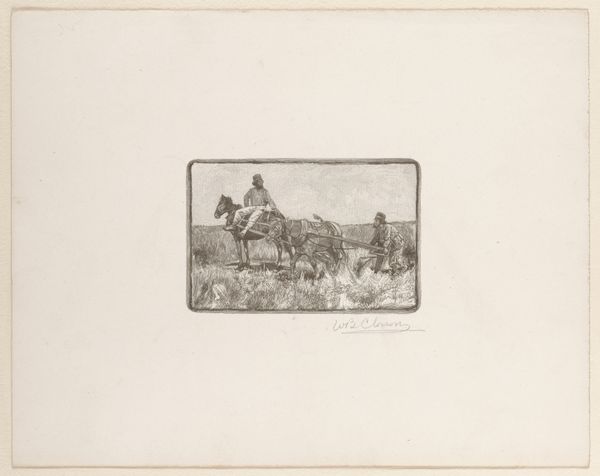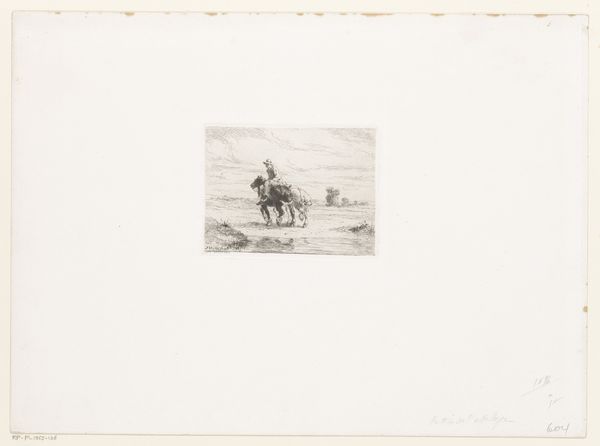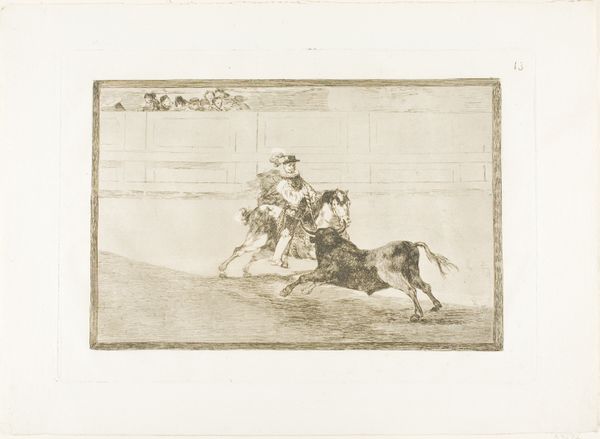
drawing, paper, ink
#
portrait
#
drawing
#
pencil sketch
#
dog
#
landscape
#
figuration
#
paper
#
ink
#
romanticism
#
genre-painting
#
history-painting
Dimensions: height 193 mm, width 144 mm
Copyright: Rijks Museum: Open Domain
Editor: This drawing, "Zittend man met hond" by Adam von Bartsch, from 1803, captured in ink on paper, has such an intimate feel. The man and his dog seem caught in a quiet moment of companionship. What draws your eye to this particular work? Curator: What strikes me is the symbolic weight carried by these two figures together. Consider the dog: often a symbol of loyalty, yes, but also of vigilance, of the domestic sphere intertwined with the wild. He is clearly a working dog. This creates tension – is this master grateful for companionship or expecting diligent servitude? Look closer: observe the tension around the mouth and the angle of the man's jaw. What is he hiding? Editor: That's fascinating! I hadn't thought about the tension. The dog seemed like a simple companion. But what about the man's attire? Does that signify anything? Curator: Absolutely. Notice the wide-brimmed hat, the clothing suggesting someone connected to the land, perhaps a wanderer or a figure on the periphery of society. He represents more than just a simple farmer resting with a loved pet; he's reminiscent of similar symbolic characters throughout the romanticism movement. And it suggests his possible psychological state in the picture, wouldn't you agree? Editor: Yes, the clothing definitely adds a layer of complexity. He feels less like a simple portrait now. It’s amazing how much meaning can be packed into such a simple drawing. Curator: Precisely. It's through these visual cues, repeated and transformed across time, that cultural memory persists. This drawing reminds me of... Editor: What a great introduction into cultural and historical influences to figurative art!
Comments
No comments
Be the first to comment and join the conversation on the ultimate creative platform.
